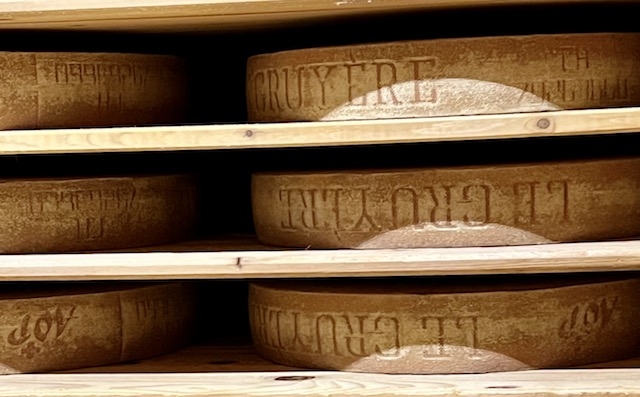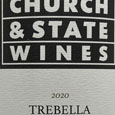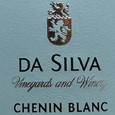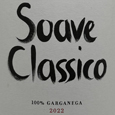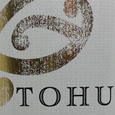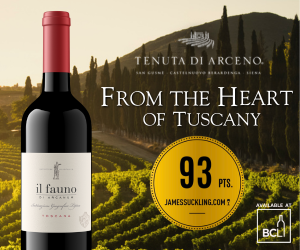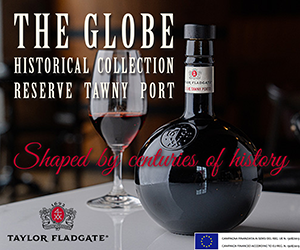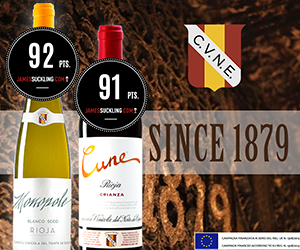I went to Switzerland recently and learned more about Gruyere and how it is made.
It was an action-packed trip and an excellent opportunity to brush up on my cheese knowledge and meet other mongers across Canada. I was very excited about the opportunity, as I hadn’t even set foot in Switzerland since I was ten, which is a really long time ago! I was very happy to find that it was just as I remembered it—beautiful mountain pastures, cows dotting the hillside, and picturesque farms and houses aplenty. Over the three days we were in the Gruyere area, we learned a tremendous amount about the production and aging of Gruyere.
Cheese Name: Le Gruyere AOP
Origin: Switzerland
Milk Type: Raw cow’s milk
Style: Firm mountain cheese
Farmers produce the milk and deliver it to the cheese makers twice daily, in the morning and evening. Most of the farms are within a few kilometres of the dairy. To sell their milk for Gruyere, the cows are fed 70% of grass and hay from their property, cannot be treated with antibiotics and can’t be fed silage (fermented feed, which can cause second fermentation in the cheese). In turn, they are rewarded with an excellent price for producing this high-quality milk. It is good for the quality of the cheese and the Gruyere name, as well as for the farmers. Win, win.
The next step in the process, and the next person involved, is the cheese maker. Interestingly, they are always two separate entities. No
farmers make cheese; they concentrate on producing excellent milk and caring for their herd. The cheese maker worries about making great cheese and doesn’t have to worry about farming, which seems to make a lot of sense, as they are both full-time jobs.
After the cheese is made, it goes to the Affineur, who cares for and ages the wheels before they go to market. They decide how long to age each wheel and continue the curing process by salting and brushing the outer crust to protect and season the cheese. They will determine which wheels should be sold at the usual age of 6-9 months and which wheels will benefit from further aging until they can be sold as Gruyere Reserve.
So, three different people with very specific jobs cooperate in making Le Gruyere. The interesting part is that they are all members of the same organization in charge of preserving the history and taste of Gruyere. Everyone has a seat at the table when things are determined for the future of this important Swiss cheese.
Like all mountain cheeses, part of the taste of the cheese is determined by what the cows eat. Everywhere you go, as you travel around, you see pastures full of wildflowers and grasses, as well as a veritable smorgasbord for happy cows. The cows are milked twice daily, in the morning and evening, and the milk is delivered directly to the dairy. I was surprised by how small the farms and the dairies were. Most farmers have herds of 30-50 cows, and most cheese makers only make 10 to 20 wheels a day.
The largest operations are the caves where the affineurs age the cheeses. Because of the room needed to store thousands of 40-kilo Gruyere wheels, only 11 affineurs are aging.
My visit reminded me that I constantly think of how useful Gruyere is for cooking and baking, but I forget how delicious it is just as cheese. The nutty flavour, the lovely semi-firm texture, and the beautiful floral finish are special and unique to that area. We get wrapped up in what you can use Gruyere for because it is invaluable for many delicious recipes and dishes. Still, it is just as impressive on a platter and can stand up against a myriad of other cheeses and their accompaniments.
I suggest trying it with a dry white wine, as the Swiss do, and some beautiful summer fruit as it arrives. Cherries or apricots would be perfect.

 quicksearch
quicksearch

